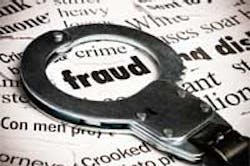Those damage assessments come from the 2010 edition of the Association of Certified Fraud Examiners (ACFE) Report to the Nations on Occupational Fraud and Abuse. Perhaps the report’s most unsettling finding is this: 5 percent of a typical organization’s annual revenues are lost to fraud. A typical scheme goes undetected for 18 months. The full amount of the known tangible losses is seldom recovered. Investigations and ensuing litigation cause prolonged business disruption. Stakeholders lose confidence. Sometimes the cumulative damage from fraud is so bad that recovery is just not possible. Often perpetrators are not prosecuted, much to the dismay of potential future victims.Focusing on fraud prevention helps keep manufacturers from facing such prospects. That focus begins with understanding ways fraud is executed, and general fraud prevention principles.Primary categories of fraudFraud schemes generally fit within the following three categories: asset misappropriation, corruption and financial statement fraud.For manufacturers, asset misappropriation is the most common and inclusive form of occupational fraud. It strikes small and large companies alike. Asset misappropriation incidents include fraudulent invoicing, inventory larceny, job cost manipulation and revenue skimming. While such schemes usually center on cash, the ACFE report also indicated that non-cash items including raw materials, supplies and inventory were targeted in more than 23 percent of cases involving manufacturers.A company processing high volumes of transactions faces risk because improper actions may remain undetected amidst that activity. Job order costing assigns values for overhead, labor and other items. Those values may be manipulated. A manufacturer may pay for complete parts orders, with some delivered units omitted from inventory records. Good product may get written off as scrap and sold on the side.Corruption schemes include kickback payments, bribes or undisclosed conflicts of interest. Financial statement fraud includes such schemes as classifying revenue-based expenses as capital expenditures to hide losses, or recording pending sales as completed transactions. Recognizing that specific vulnerabilities vary among companies, there are universal fraud prevention concepts applicable to every manufacturer.Effective fraud preventionFive elements present in fraud schemes are intent, motive, opportunity, repetitive acts and concealment. Manufacturers have the most control over opportunity.Individuals have differing motives for considering fraudulent behavior, but perceived opportunity—the belief that fraud can be executed without getting caught—is a crucial factor in determining whether someone acts upon any improper motive. A fundamental principle of effective fraud prevention is removing that perception of opportunity.Management sets the tone at the top by regularly emphasizing fraud prevention. That creates an internal culture where individuals feel compelled to report possible fraud. Such a culture dispels perceptions of opportunity.Incorporating segregation of duties into individual job descriptions further combats that perception of opportunity. Such segregation separates responsibilities that present inherent conflicts of interest. For example, one person should not be responsible for depositing cash and reconciling the bank account, or ordering materials and verifying that shipments are received. Fraud prevention measures incur initial costs and continual expense. The total expense of implementing effective controls, however, is typically less than the cost incurred by just one fraud detection incident. Fraud prevention functions as insurance that saves manufacturers from having to make the difficult calculations that accompany fraud detection.Alyssa Martin, CPA, is the Dallas executive partner and a partner in Advisory Services for Weaver, ranked the largest independent certified public accounting firm in the Southwest with offices throughout Texas. Contact her at [email protected] or 972.448.6975.
About the Author
Sign up for our eNewsletters
Get the latest news and updates

Leaders relevant to this article:
